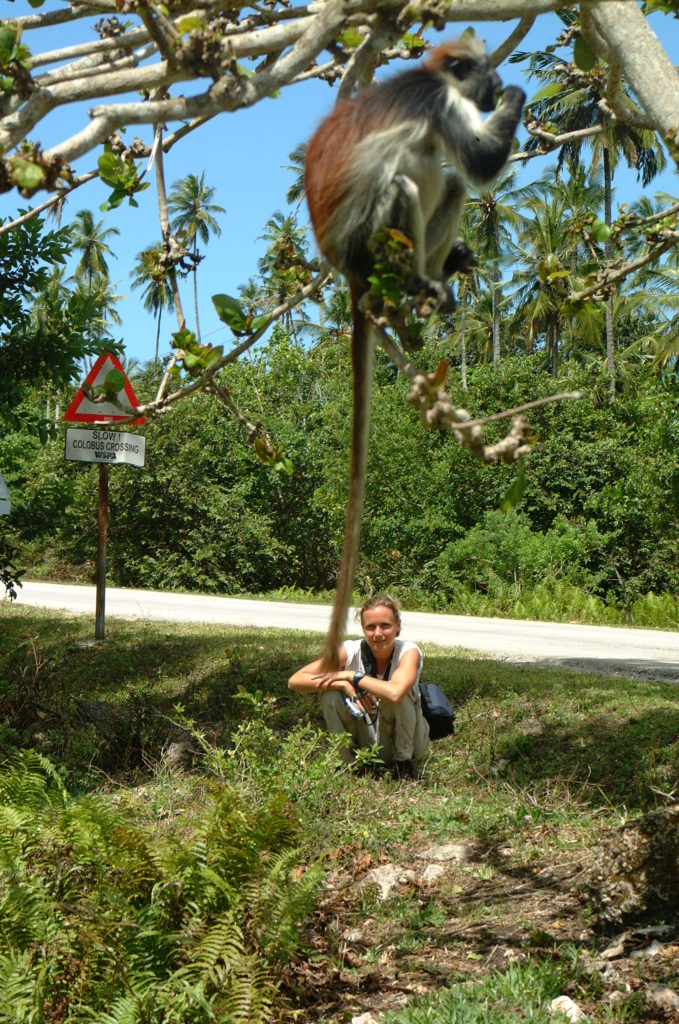My doctorate thesis was about how an island primate, the endangered Zanzibar red colobus monkey, is behaviorally adapting to human-driven change in coastal forests. My team and I helped stop golf course development and trash dumping by hotels in a forest that became a new protected area, the Kiwengwa-Pongwe Forest Reserve. We published articles about mangrove use by Zanzibar red colobus and a book, Primates in Flooded Habitats. In 2008, I co-founded a project that is now the Southern Tanzania Elephant Program that fosters human-elephant coexistence. From 2013-2016, I researched risk and cognition in samango monkeys at two Afromontane forest sites in South Africa finding observer effects on monkeys’ landscape of fear.
In Zanzibar, I witnessed the loss of native coral rag forest and tree species for agriculture, building poles, and plantations of Casuarina; this forest loss is associated with the loss of native biodiversity and loss of medicinal plants for local people. Forest loss also increases contact between people, domestic animals such as dogs and cattle and wildlife. I witnessed dog packs harassing monkeys and duiker in forests in Zanzibar even in fringe mangroves at the tip of Uzi Island where terra firma forest directly adjacent to mangrove was being cleared for agriculture. I also observed adult red colobus grooming a calf beyond the forest margin. In the Udzungwa Mountains, polyspecific primate associations appear to be more common at forest edges than in forest core and this may have implications for disease emergence and for human-wildlife conflict. Where there is a lack of a buffer zone between intact forest and farms, and a lack of connectivity between forested areas, large mammals such as elephants, bushpigs, and baboons easily enter farms for crop-use; mitigation is that much more challenging in areas without buffer zones. For example, where we used a beehive fence to deter elephants from farmers’ crops, the fence had to be placed in a certain way at the periphery of the Udzungwa Mountains National Park so that bees would not pose a risk to farmers at work in their nearby fields. In Hogsback, South Africa, collaborators and I recommended the removal of acorns (from oaks planted by Europeans) from gardens so that these would not attract groups of samango monkeys that ingest the acorns during winter. The monkeys are perceived by some people as a nuisance when they enter gardens; the acorns are also detrimental to monkeys’ dental health. In Canada, in areas previously mined and therefore containing webs of roads, human (often with dogs) access for recreation is frequent and mammals such as mountain goats move at night possibly to avoid people. We saw this with elephants in Udzungwa, where movement and use of crops occurs at night when farmers are not in their fields. Coexistence between people and other animals will continue to pose a challenge especially where land planning excludes local people and their knowledge or fails to consider the landscape at large or species interactions.

